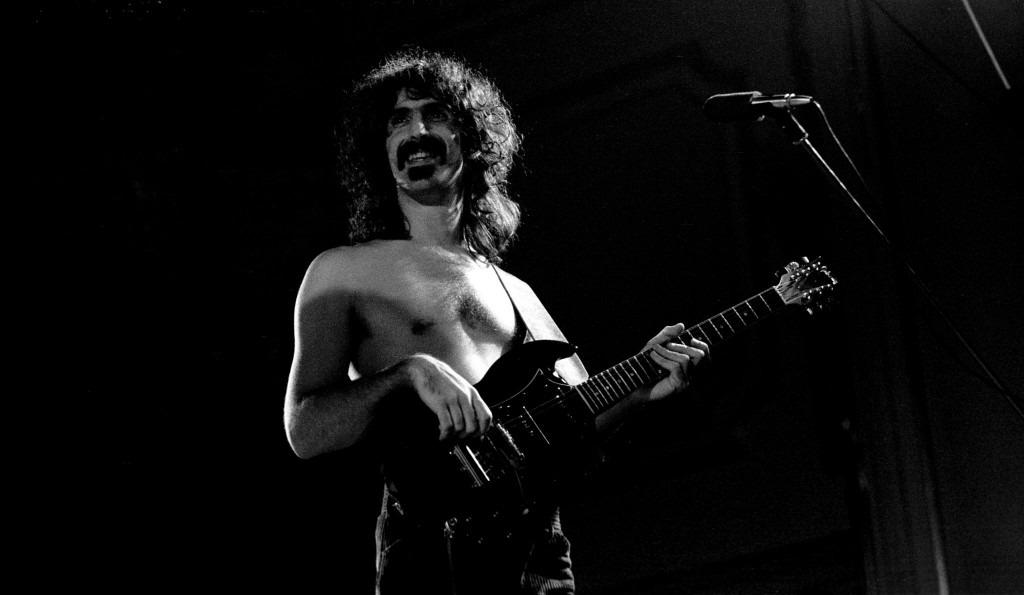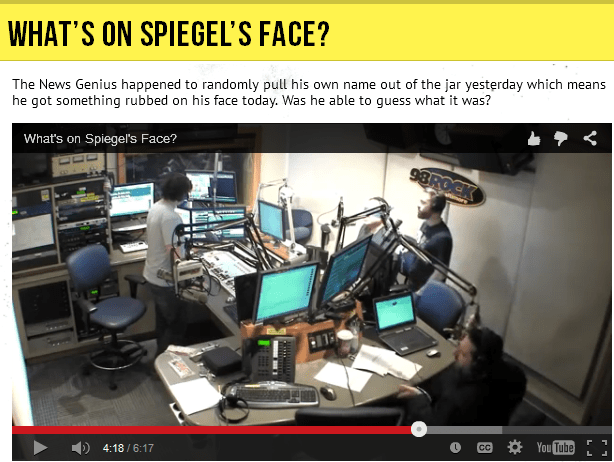Today’s blog post title is a twist on the old saying, “Necessity is the mother of invention.” Obviously, that adage resonated with Frank Zappa, but today’s headline is more about how futility just might be the catalyst that spawns and motivates out-of-the-box thinking.
In radio, the old pre-Internet rankings always showed the industry behind TV and print, especially in terms of revenue generation. And as digital media have grown, radio has struggled to maintain its share of everything, from listening to sales.
The National Hockey League can relate. As the NFL celebrates its 30th year in a row as the most popular sport among fans, the NHL continues to flounder. A recent Harris Poll shows the NHL holds only 5 percent of “P1” votes, behind the NFL, Major League Baseball, college football, auto racing, and the NBA. It’s not pretty, and it’s not getting better.
While pro hockey has many hardcore fans – many of whom work in radio, incidentally – the league struggles to stand out as the wrapped up it All-Star Game tonight in Columbus.
So how to reinvent a sport that’s been plagued by an entire season lockout (2004-05)?
With technology, of course, and elevating the fan experience.
The NHL has cut a deal with GoPro, the maker of those amazing cameras that could revolutionize ways that fans will now be able to experience the sport. It is not totally clear how and where these cameras will be used. It seems obvious they’ll be placed behind the net and around the ice. But there are other indicators there may be times when GoPro cameras will be mounted on players’ helmets to provide fans with a never-seen-before look at the game.
Up to now. GoPro cameras have been associated with more action and extreme sports, like snowboarding. And unlike a more typical piece of electronic gear, the GoPro franchise is about young, energetic demographics (something every sport covets), as well as consumer-generated media. Their YouTube channel has more than 2.6 million subscribers. Suffice it to say, GoPro is a media and cultural force.
Now this isn’t the first time the NHL has taken a foray into technology, and previous results haven’t been pretty. Back at their All-Star Game in 1996, FoxTrax was introduced – a super-imposed blue glow on the puck was designed to make its movement more visible on television. Fans hated the effect, and years later, Slate asked whether this “innovation” was perhaps “the worst blunder in TV sports history, or was it just ahead of its time?” Probably the former.
But you have to believe that these GoPro cameras will produce a different result. And it’s probably a sure thing the commissioners of the other sports leagues will be watching this closely because they also know that fans want to go behind the scenes and gain a unique perspective on the action.
You can see for yourself how hockey becomes a totally different sport through the lenses of these GoPro cameras. The video below provides a view that elevates the sport, as well as even a casual fan’s interest in the game. You have to wonder if even non-hockey fans won’t marvel as the artistry displayed on the ice via GoPro technology.
(Email recipients can click here to see the video.)
Bob Chesterman, NHL Senior VP of Programming and Production notes that “…only GoPro has the technology to help us and our media partners showcase the beauty and intensity of hockey in new and deeper ways.”
Other sports are sure to follow.
And that takes us back to a radio discussion we’ve had in this space in the past few years. Our fans also have an interest in going behind the scenes to see the personalities and shows they love, in a real-time way in the air studio (and perhaps even in the halls of the stations and meeting rooms themselves).
Yet, radio’s stars have traditionally been cloistered away in the comfortable and mostly private confines of well-insulated air studios, far away from the audience and even others who work at stations. In many ways, studios have been built and treated like sanctums – workplaces that are protected from the eyes of fans.
There are exceptions, of course, Preston & Steve at WMMR have a wonderful studio setup, allowing them to record and produce a “Daily Rush” video that continues to grow in popularity.
At 98Rock (WIYY) in Baltimore, the morning show – Justin, Scott, & Spiegel – are streamed every day from 8-10am via the LiveWire cameras. The views aren’t always pretty or action-packed, but the stream is almost always interesting, and often compelling, especially when there are guests or visual bits going on in the studio.
There are other shows that have taken the plunge to real-time videos, but most are still fearful of or resistant to a technology that could change the game for radio, providing listeners with not only a new point of view, but also something to talk about.
We often speak of “market firsts” in radio in formattic terms. Is there a “hole” in the market for Classic Hip-Hop? Could we benefit from being the second All-Christmas Music Station?
But who will be the first show in town to provide real-time in-studio video for the audience, and what is the benefit of being the only ones to give fans that unique perspective? Overcoming the natural negativity and fear of having cameras in the air studio is key to taking advantage of what could become a unique fan experience for radio broadcasting.
Frank Zappa and the Mothers Of Invention was about more than just its name. In a sea of sameness, they were a true underground band and not afraid to be different, as Zappa reinvented the concept a number of times, changing out his members and musical stylings over the years. That innovative spirit has become mandatory in a media and entertainment environment where fans are always seeking more. Looking at the current product and constantly looking for new ways to make it different, more compelling, and buzz-worthy are what brands across the globe are seeking to do. Whether it’s Apple acquiring Beat Music, Starbucks offering Oprah’s Teavana teas, or the NHL connecting with GoPro, this spirit of innovation through partnership is something every radio company and successful brand should be seeking out.
The NHL may get a glimpse of how their own innovation, risk-taking, and invention work tonight. The other leagues will be watching carefully.
You should be, too.
Both WMMR and WIYY are Jacobs Media clients.
- What To Do If Your Radio Station Goes Through A Midlife Crisis - April 25, 2025
- A 2020 Lesson?It Could All Be Gone In A Flash - April 24, 2025
- How AI Can Give Radio Personalities More…PERSONALITY - April 23, 2025






Attention Jox, ESPECIALLY Morning Talent: One of the perks of working in our business is a casual environment while in the studio. But when you are seen by the public you can help or hurt your image based on the way you look.
It’s a visual world, baby,and we just live in it. Optics mean a lot. I have seen a lot of morning talent on local TV and in web pieces lately looking like the bottom of the show-biz food chain. Guys looking like the loser son that won’t move out of the basement. Women with no makeup and their hair held up with a chip clip.
I’m not suggesting neckties and pantsuits. But please, just give some thought to this idea: Don’t dress like your listeners; dress like your listener’s favorite, successful entertainer. Consider all the radio talent at the top of the ratings and pay scale. They don’t dress like the listening public and they don’t all wear the same uniform. But they do dress like successful, confident stars.
Stern’s image is one of controlled chaos. But he always almost wears a jacket or hip shirt and has some style.
Rush wears golf shirts and khaki pants, and a jacket if he’s out of his chair.
Seacrest dresses like a 2015 version of Dick Clark (which is what he is, right?).
And almost every syndicated female on radio looks nice when photographed or taped.
Now, if you react by suggesting “looks” are a material hang-up and you’re above that, I would remind you that almost everyone else in the music biz puts some thought into how they look when performing. When they don’t and look like slobs, it’s on the front page of some gossip rag and usually includes some pretty negative comments.
The Beatles wore custom suits in the 60s, and after that actually started trends in fashion-forward clothing. Clapton wears Armani. Dylan wears a tie. And for those of you under 50, everyone in The Pop/Rap world today no matter the style of their music, dresses to promote success. Even Slim Shady wears a decent hoodie. You don’t have to spend any money to look the part.
And make no mistake, we’re ALL playing a part. Question is: Are you playing the part of a winner or a loser? P.S. And for God’s sake, if you’re lucky enough to be going out on sales calls, don’t wear what passed the “smell test” from the bottom of your hamper.
Jim Harper-Detroit (retired)
Jim, I can’t thank you enough for the amazing perspective from someone who excelled at your craft – and always looked and acted the part.
When I first met Bob Stroud at WDRV/Chicago a couple of years ago, I was amazed at how he is always dressed to the nines. He often wears a tie, and is always well put-together. He’s a true professional, and it starts with how he looks when he walks into the studio. I appreciate you illuminating the reasons why guys like you, him, and a few others take all of this into account – whether there are cameras on or not.
Thanks!
Great article Fred.
About 2 years ago, we started streaming live video of the Connoisseur Media CT rock morning show Chaz and AJ. We set up a 3 camera shoot (Chaz / Aj / Guest) and used the free service Ustream.
Yes you have to sit through “ustream” pre-roll, but it really is an easy way to make it happen and great for this type of show that has a lot of guests and in studio antics.
Its live on the website every morning from 5:30a – 10am.
Thanks for the heads-up, Keith. Somehow I’m not surprised that you guys are doing this. PLR and Chas & A.J. are class acts. Appreciate you adding to the conversation.
Great article. As a guy that one time got turned down for a gig for dressing “too rock and roll” (a first, yet lesson learned), the audience translates dress and decorum critically regardless of format or venue. Act the part, look the part and they’ll belive you’re worthy of the part. Unless you’re the Trivago guy…. What’s with that?
The Trivago guy defies explanation. But as you point out, the audience is making their judgments. Jim Harper’s comments really resonated with me and hopefully others. Thanks so much, Scott.
To understand the Triavgo-guy, just ask a women over 30. (A process we sometime forget.)
From what I’ve observed, some women say he looks kind of sloppy, needs a shave, wrinkled clothes, but he appears to be approachable and DOES have sex appeal. A little “rough around the edges”, but a regular guy-next-door who probably works with his hands for a living.
See, the problem is that I’m still too many focus groups with MEN. Thanks for the clarity, Jim. As you pointed out with you Howard Stern example in your earlier comment, it’s about having a look. Think Mike Rowe. Appreciate it.